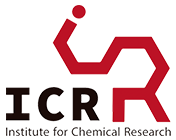Unstable Nuclear Science by EM probe
We have been studying the structure of nuclei by electron scattering using high-energy (a few 10 ~ a few 100 MeV) electron beams. In particular, we are aiming to realize electron scattering for unstable nuclei with an imbalance between the number of protons and neutrons, which has been considered impossible until now.
The interaction between electrons and nuclei can be described by quantum electrodynamics, and the theoretical calculation of the reaction is possible with very high accuracy. This makes electron scattering a very reliable and powerful probe for unambiguously determining nuclear structures which are dominated by strong interactions. Combined with our accelerator technology and ion transport/capture technology, it will enable us to conduct completely new studies on targets that were previously thought to be impossible.
Elastic electron scattering from unstable nuclei — SCRIT —
Electron scattering experiments have been conducted mainly on stable nuclei to elucidate the fundamental properties of nuclei as described in textbooks. On the other hand, with the recent development of accelerator technology, research has been conducted around the world on short-lived unstable nuclei (RI), in which the number of protons and neutrons is out of balance. Although such nuclei do not exist in our immediate surroundings, they are thought to play a key role in the extreme environments of the universe, such as the interiors of neutron stars, supernova explosions, and neutron star mergers. However, unstable nuclei with short lifetimes are very difficult to produce and collect, and even if they are collected, they are lost through decay, making them virtually impossible to target for electron scattering.
To overcome this situation, we have developed SCRIT (Self Confining RI Ion Target) [1]. By precisely controlling the orbits and energies of target ions, the target ions are trapped on the electron beam by the electric field generated by the electron beam itself, and scattering events can be efficiently induced. Figure 1 shows an external view of the SCRIT electron scattering facility constructed at RIKEN. We have already conducted a demonstration experiment using stable nuclei (132Xe) and achieved the required luminosity (the amount of overlap between the electron beam and the target) by introducing only 108 targets in the SCRIT system and successfully obtained the nuclear charge distribution [2]. After improving the efficiency of target generation and transportation, we realized to perform the world’s first electron scattering experiment with unstable nucleus which was produced online via photo-fission of uranium. This result was published on Physical Review Letters[3].
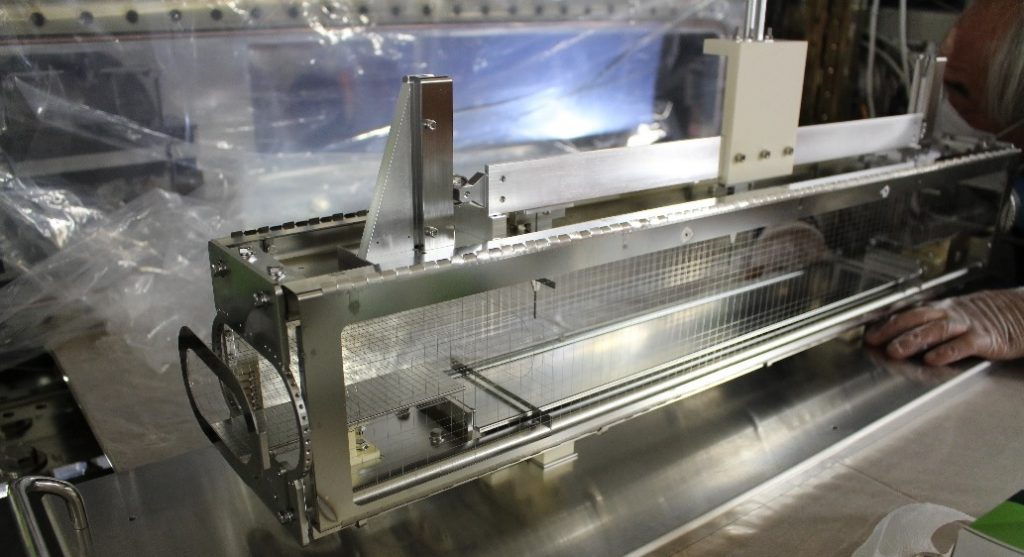
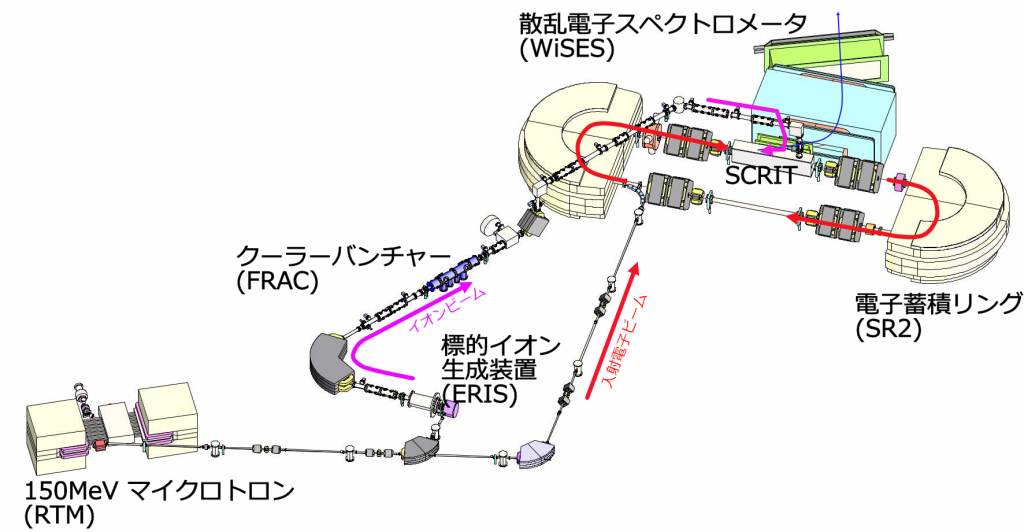
All systems are operated by the SCRIT team.
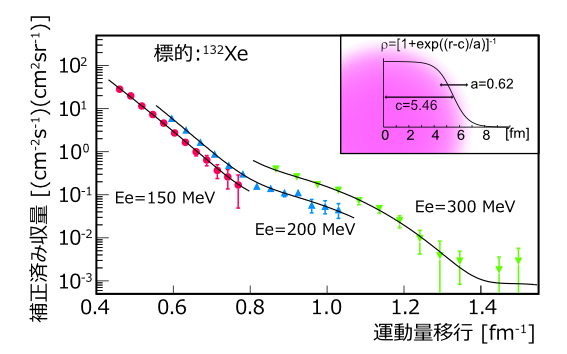
Photo-nuclear response by very forward electron scattering — KSR —
Among the studies of nuclei by electromagnetic interactions, the photoabsorption reaction using high-energy photons (gamma rays) is one of the most fundamental responses of nuclei to an external field and provides us with various information on the ground and excited states of nuclei. Stable nuclei have been measured using electron beams and gamma rays of various energies so far, and in particular, collective motions called dipole giant resonances are known in the region of 10-30 MeV.
The energy dependence of the photoabsorption cross section in the giant resonance region strongly reflects the shape of the nuclear ground state (Fig. 4). In stable nuclei, spherical and prolate shapes are common, and oblate shapes are also known to exist. But the triaxially deformed ground state has not yet been discovered, and no confirmation method has been established. In the unstable nuclear region, the common sense we have established from our research on stable nuclei is limited, and it is said that such shapes may also exist. The combination of our SCRIT method and ultra-forward electron scattering measurements is expected to make it possible to study photoneutron reactions targeting unstable nuclei for the first time and to clearly show the existence of triaxially deformed nuclei.
Currently, we are trying to reactivate our own electron storage ring (KSR) and are also developing a new SCRIT method and an unstable nucleus production and transport system.
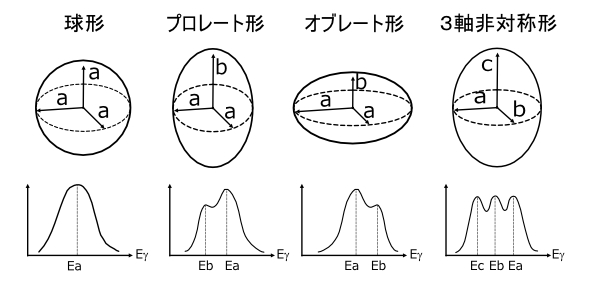
Proton radius precision measurement — ULQ2 —
The properties of protons (= hydrogen nuclei), the building blocks of nuclei, are a fundamental and important research subject in the study of elementary particles and atomic nuclei. The ULQ2 experiment measures this very basic physical quantity, the proton charge distribution, in a way that has never been measured before. In the 1950s, high-energy electron scattering experiments by R. Hofstadter et al. showed that the proton is not a particle but has an internal structure (it is now known to be composed of three quarks u, u, and d), and in recent years detailed studies of its internal structure, including the origin of the nucleon spin, have been actively pursued. However, a new method called μ-hydrogen spectroscopy has been found to give a 4% different value for the charge distribution of the entire proton (0.84087+-0.0039 fm[4] compared to the value obtained by electron scattering and hydrogen spectroscopy experiments (0.8775+-0.0051 fm codata2010[5]), and this has led to the discovery of the Experimental and theoretical follow-up studies are being conducted around the world.
We have realized that electron scattering measurements in the ultra-low-momentum transition region, for which no data exist so far, are very important for determining the proton charge radius, and we are now conducting electron scattering experiments using the low-energy electron accelerator (60 MeV LINAC) at the Research Center for Electron Photon Science, Tohoku University. The construction and commissioning of the spectrometer was completed in 2022, and the data taking has started in 2023.

- M. Wakasugi et al., Phys. Rev. Lett. 100 (2008) 164801.
- K. Tsukada et al., Phys. Rev. Lett. 118 (2017) 262501.
- K. Tsukada et al, Phys. Rev. Lett. 131 (2023) 092502
- R. Pohl et al., Nature 466 (2010) 213.
- P. J. Mohr, B. N. Taylor, and D. B. Newell, Rev. Mod. Phys. 84(4) (2012) 1527-1605.

